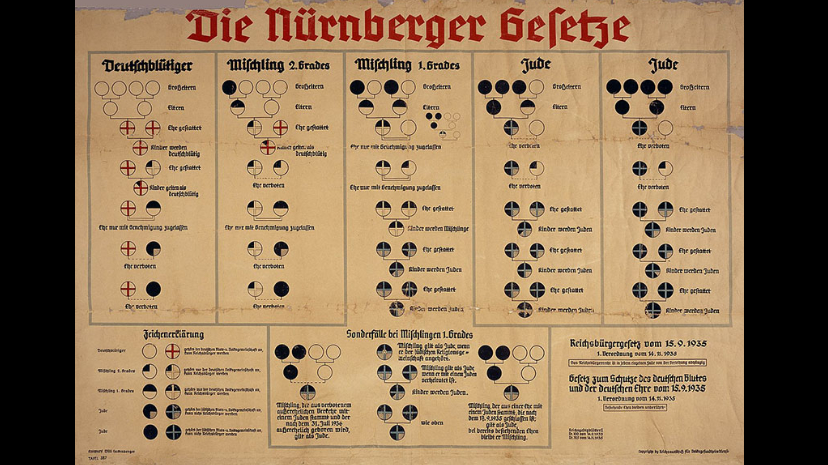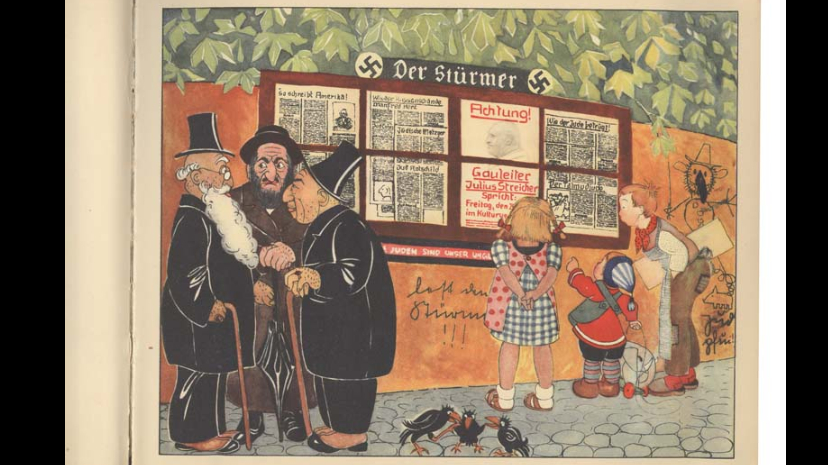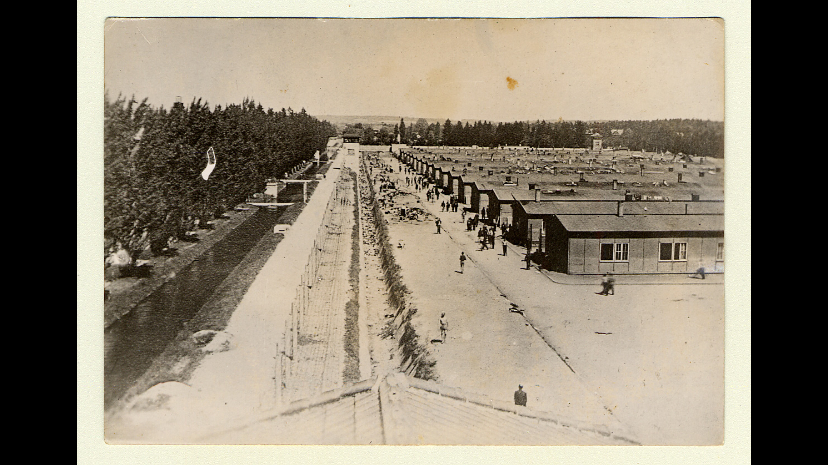The ten stages of genocide
Genocide is a human phenomenon that can be analysed and understood, and consequently, may be prevented. According to academic and activist Gregory H. Stanton, genocide is a process that develops in ten stages, described here. The stages do not necessarily follow a linear progression and may coexist. Prevention measures may be implemented at any stage.
1. Classification
Groups in a position of power will categorize people according to ethnicity, race, religion or nationality employing an us versus them mentality.
Prevention: Create universalistic institutions that foster social cohesion.
2. Symbolisation
People are identified as Jews, Roma or Tutsis, etc., and made to stand out from others with certain colours or symbolic articles of clothing.
Prevention: Ban the symbols and hate speech and all clothing meant to discriminate against groups.
3. Discrimination
A dominant group uses laws, customs, and political power to deny the rights of other groups. The powerless group may not be granted full civil rights or even citizenship.
Prevention: Ensure full political empowerment and citizenship rights for all groups in a society. Discrimination on the basis of nationality, ethnicity, race or religion should be outlawed.
4. Dehumanisation
The diminished value of the discriminated group is communicated through propaganda. Parallels are drawn with animals, insects or diseases.
Prevention: Promptly denounce and punish perpetrators and make hate crimes and speech culturally unacceptable. Sanction all incitements to commit genocide.
5. Organisation
A state, its army or militia design genocidal killing plans.
Prevention: Outlaw membership in these militias and sanction their leaders. Impose arms embargoes on the countries involved and create commissions of inquiry.
6. Polarisation
Propaganda is employed to amplify the differences between groups. Interactions between groups are prohibited, and the moderate members of the group in power are killed.
Prevention: Protect these moderate members and human rights groups. Seize the assets of the oppressors and refuse their access to international travel.
7. Preparation
The victims are identified, separated and forced to wear symbols. Deportations, isolation and forcible starvation. Death lists are drawn up.
Prevention: Humanitarian aid, armed international interventions or major support for the victims to ensure their ability to defend themselves.
8. Persecution
Victims are identified and isolated based on their ethnic or religious identity. Death lists are drawn up. In state sponsored genocides, members of victim groups may be forced to wear identifying symbols. Their property is often expropriated.
Prevention: Regional organisations and the international community must mobilise themselves to assist or help the victims.
9. Extermination
The massacres begin. The perpetrators see their actions as “extermination” since they do not consider their victims to be entirely human.
Prevention: Only large-scale armed interventions can stop genocide. The international community must support the operations by providing air transport, equipment and financial support.
10. Denial
The perpetrators of the genocide deny having committed their crimes. Victims are often blamed. Evidence is hidden and witnesses are intimidated.
Prevention: An international tribunal or national court must prosecute the criminals. Public education.
Preventing genocides
In order to prevent genocides from occurring, it is important to first understand how they unfold. Intervening as soon as the earliest signs appear saves lives. Cooperation between parties can be facilitated, joint projects initiated and pressure for an equal distribution of power can be made. The UN and certain governments and organizations use a system of “early warnings” issued by observers in the field so as to be able to quickly intervene by providing human, military and legal resources.
Can we help? Yes. Signing petitions, sending letters, protests and awareness-building events exercise a concrete impact on governments and the media. Genocide prevention is an ongoing challenge. One of the greatest obstacles is the lack of political will of certain states to intervene in other countries. There are efforts to reverse the trend, but there is still much work to be done.
Learn more about genocides
With your high school and college students, you can visit our “United Against Genocide: Understand, Question, Prevent” virtual exhibition which, with the help of a comparative approach, takes a closer look at four genocides of the 20th century: the Armenian genocide, the Holocaust, the genocide in Cambodia and the genocide of Tutsis in Rwanda. The exhibition also provides the opportunity to learn more about four contemporary situations of escalating violence: Burundi, Iraq, South Sudan and Myanmar. The accompanying teaching guide provides educational activities for the classroom related to this subject. You can learn more about the virtual exhibition, the traveling physical version and the accompanying teaching guide here.
For a deeper exploration of genocides, consult the pedagogical guide “Studying Genocides.” It provides educators with a variety of resources and tools to delve into the nine genocides of the 20th century and enhance their understanding of the genocidal process. Its objective is to stimulate reflection on potential measures to prevent future genocides.











